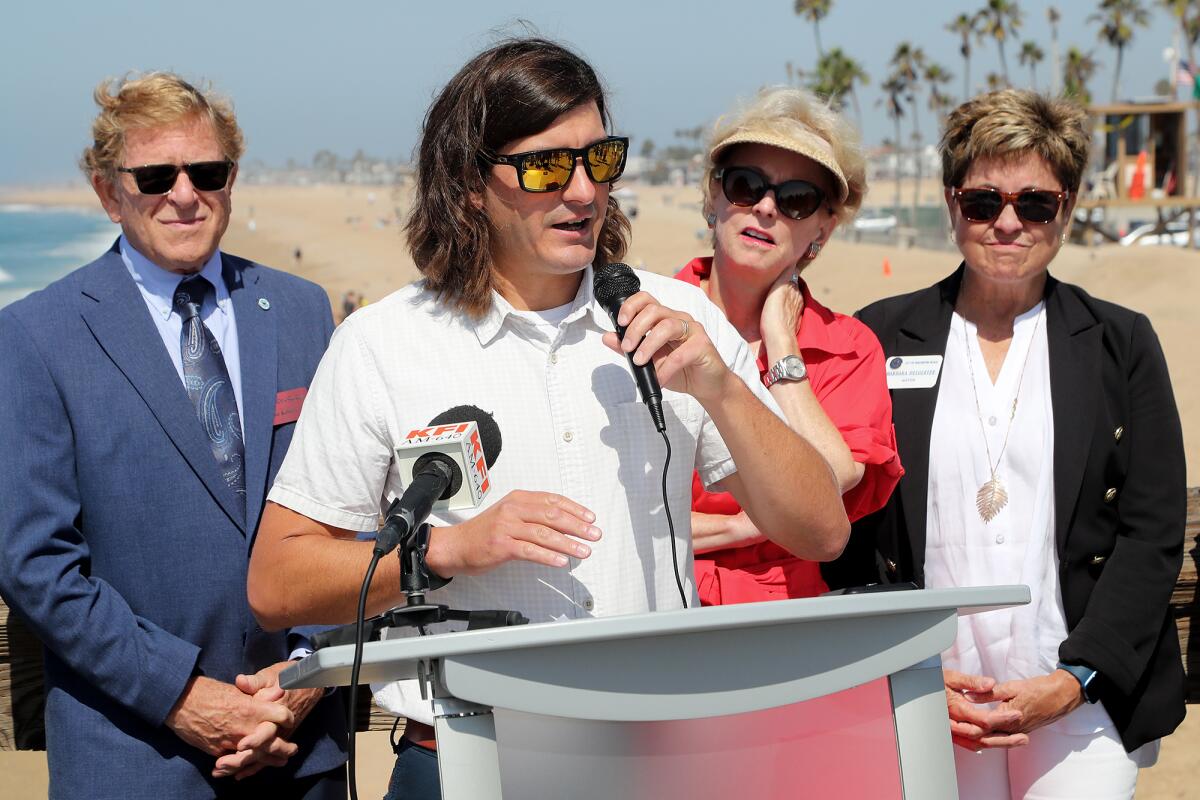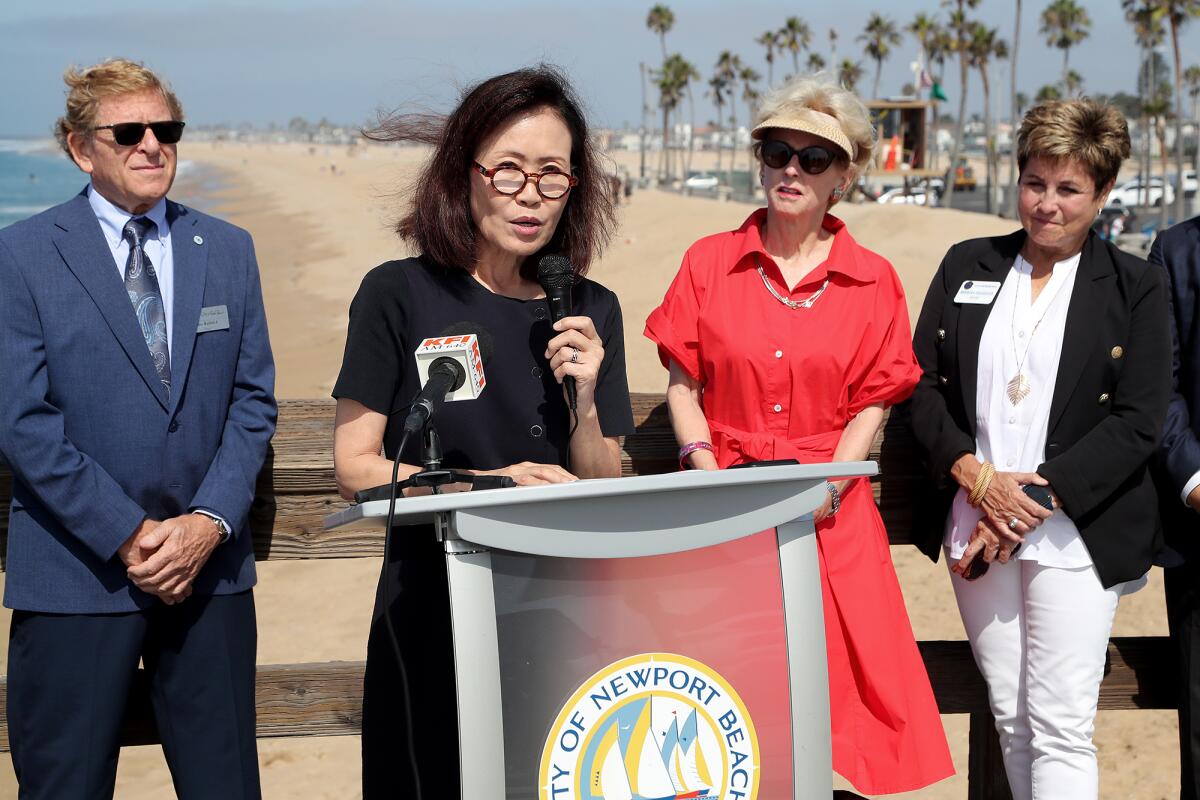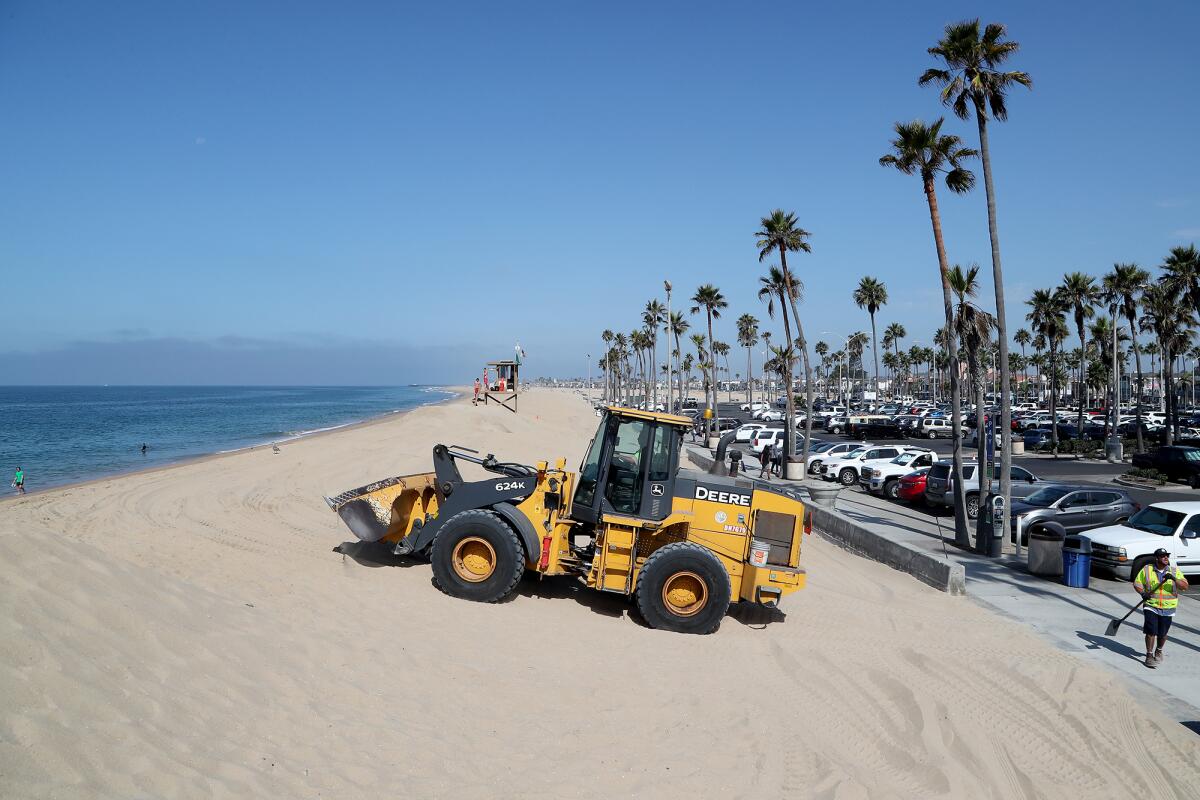Surfside-Sunset and Newport Beach sand replenishment project design about 95% complete

- Share via
As trucks rumbled back and forth ferrying loads of sand on the shore behind them, officials from the U.S. Army Corps of Engineers said during a public update Tuesday the project design for the Surfside-Sunset and Newport Beach sand replenishment project is about 95% complete.
“The design and environmental reviews are concurrent. We’re waiting for some final environmental approvals, but I think construction will be the end of 2024 to the beginning of 2025, but we’re still waiting on some final approvals,” said Chris Hayward, a coastal engineer for the corps’ Los Angeles district.
Army Corps of Engineers Col. Julie Balten noted the key to achieving the tentative timeline was partnership agreements. She noted the corps did have some environmental windows to contend with — grunion spawning season in particular, which occurs between March and August and occasionally in February to September.
Officials from the U.S. Army Corps of Engineers were present at the news conference held at Balboa Pier Tuesday morning alongside other local dignitaries, including U.S. Rep. Michelle Steel (R-Surfside), who they credited with securing the $15.5 million needed to kick-start the sand replenishment project.

About $7.5 million will be supplemented by local jurisdictions and agencies to fund the estimated $23-million project.
The project is intended to combat erosion along Orange County’s coastline, which has been long impacted by federal flood channels.
In the 1940s, the federal government widened Anaheim Bay, constructed various breakwaters and jetties for new military bases and created flood channels. The result of those efforts was the narrowing of beaches up and down the coastline.
The San Gabriel to Newport Bay Beach Renourishment Project began in 1964 to replenish local beaches and was done incrementally until 1990. By 2000, the U.S. Army Corps of Engineers declared it would no longer fund further stages to replenish the beaches, which left the task in the hands of local communities.
Hayward said the corps will dredge about 1.75 million cubic yards 2 miles offshore of Sunset Beach. That sand will then be deposited onto the beach, which will gradually erode over time and make its way down Orange County’s coast.
“Generally, that entire beach is expected to erode over a period of five years, which is why the renourishment interval is set to five years,” said Hayward.
Coastal erosion has already begun to impact Orange County’s beaches, especially in cities like San Clemente and Dana Point, which have begun to see the effects of rising sea levels along with other beaches up and down California. In Newport Beach the impacts of erosion can be seen near Balboa Pier where the distance between its beach and parking lot is narrowing.
John Kriss, president of the Surfside Storm Water Protection District, said he’s been involved with the sand replenishment project since the 1980s.

“It’s been a real effort just to try and get people’s attention,” said Kriss. “It’s great to see [the press and public] here, and you’re here because of [Steel] as her organizers brought it to your attention. What’s really important is this project has not been provided for quite a long time just because people didn’t have any interest.
“We didn’t have any money.”
Kriss said people would understand just how important the replenishment project is when they see its outcome two or three years from now.
All the latest on Orange County from Orange County.
Get our free TimesOC newsletter.
You may occasionally receive promotional content from the Daily Pilot.









